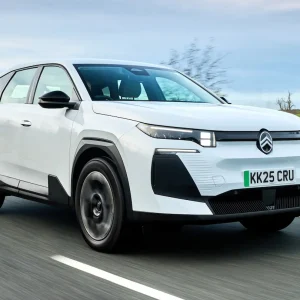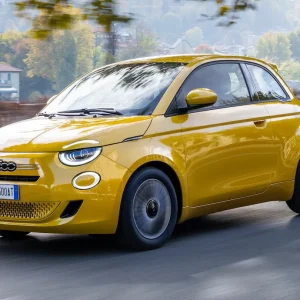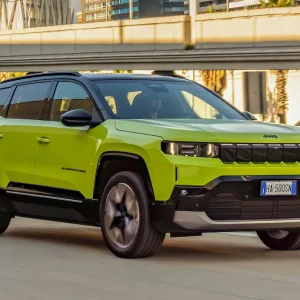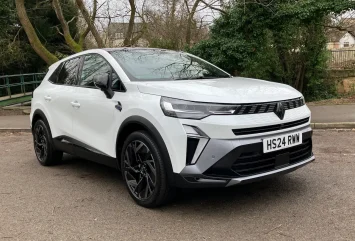
Final Report: Sibling rivalry
Shortly before our Symbioz departed from the Business Car fleet, I went to test the facelifted version of the Renault Austral on the international launch. This is like the Symbioz in being a medium SUV, but is slightly larger, more powerful, and a few thousand pounds more expensive on P11D, with Renault aiming the model further upmarket. In some ways, this was borne out, as certainly the Austral’s interior quality is higher overall. However, on the journey back from Gatwick after the event, I decided that actually, I preferred the Symbioz as a drive. Fundamentally, I think this is a question of weight, since the Symbioz is more than 100kg lighter than the Austral – and nearly 200kg lighter than the left-hand drive Austral I drove on the launch – which just makes it feel a little more agile, and a bit less heavy-footed dealing with bumps in the road. Also, and rather strangely, the clever Solarbay sunroof fitted to the Symbioz is not present on the Austral, which sticks with a conventional sunroof.
As well as updating the Austral, Renault has also recently implemented a powertrain upgrade for the Symbioz, upping the power output of the full hybrid system from the 145hp of our test car to 160hp. I’m yet to test the upgrade, but can’t really say I ever thought our Symbioz was down on power for a family SUV (editor Martyn Collins didn’t find much difference when he reviewed it). Renault also says the new powertrain uses 5% less fuel than its predecessor, which is perhaps of more tangible benefit for fleets – although our test average of 51.9mpg seems reasonable enough for a non-plug-in SUV, if a bit of a distance in the end from the official WLTP figure (a mild hybrid Symbioz is also joining the range, which will be cheaper to buy, but less fuel-efficient).
Now that our Symbioz has gone, I can also reflect on other good points, such as Renault’s My Safety Switch, which allows annoying driver assistance systems to be turned off with just two quick presses, something I think is going to become more and more appreciated by drivers as they move into post-2024 vehicles with these systems on by default (I definitely miss it on other test cars). I also appreciated the hybrid powertrain’s smooth transitions between petrol and EV modes, and the coolly minimalist driver display. In fact I got on well with the controls generally, in particular the useful ventilation system switches beneath the touchscreen.
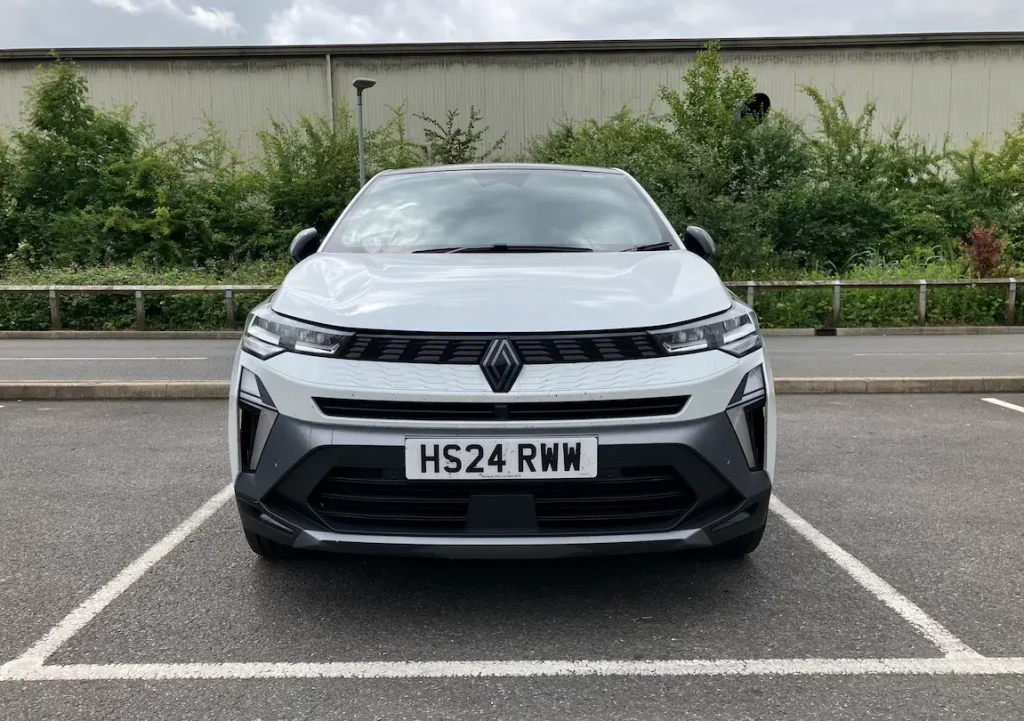
More negative points included the low-resolution reversing camera (commented on by several passengers), and the annoying periodic unidentified notification sound while driving, which was unaccompanied by any sort of explanatory message and which I never worked out the point of. I’m also still not a fan of the blue-trimmed seatbelts Renault insists on fitting to Esprit Alpine cars, regardless of how ridiculous they might look on anything other than a hot hatchback (though I remained a fan of the black alloy wheels).
Oh, and as I predicted at the start of this test, white metallic paint wasn’t the best choice – there’s a reason I photographed the Symbioz head-on to accompany this closing report, to try to hide as much of the conspicuously muck-spattered bodywork as possible.
A couple of other aspects to mention before closing. Having reviewed my previous reports, I realised I hadn’t mentioned the Symbioz’s ride and handling (except in relation to the Austral above). This is probably because there wasn’t much to say – they’re fine, which is all most would ask from a family SUV. Also, Renault makes much in its publicity material of its Google-based infotainment system, which I basically swerved entirely by sticking to my iPhone and Apple Carplay – sorry about that.
Overall, it was a basically enjoyable six months with the Symbioz, and having driven it back-to-back with the Austral I certainly didn’t feel short-changed – I continue to think the Symbioz offers decent value for money in this segment.
| Model | Renault Symbioz E-Tech Hybrid Iconic Esprit Alpine 145hp |
| P11D price | £33,055 |
| As tested | £33,705 |
| Official consumption | 60.1mpg |
| Our average consumption | 51.9mpg |
| Mileage | 5,188 |
5th Report: Crowd sourcing
During the Easter break, I spent some time visiting family and friends, which meant that several new passengers took a ride in the Symbioz. Having already run the car for several months, it was interesting to me how they drew attention to things that I’d yet to pick up on.
For instance, a couple of people commented on the poor quality of the image from the Symbioz’s reversing camera. There’s nothing wrong with it in terms of how it operates, but the resolution of the image isn’t very high. This is something I hadn’t really considered until my attention was drawn to it – possibly because I was distracted by the guide lines moving with the steering wheel in the way they hadn’t with my previous Toyota Yaris long-termer. In a previous report I said the lens was prone to getting dirty, but after further investigation and cleaning I can confirm that no, the camera picture just isn’t that good. It’s a point that was brought home around the same time when I tested an MG ZS, with which the reversing camera picture is much clearer.
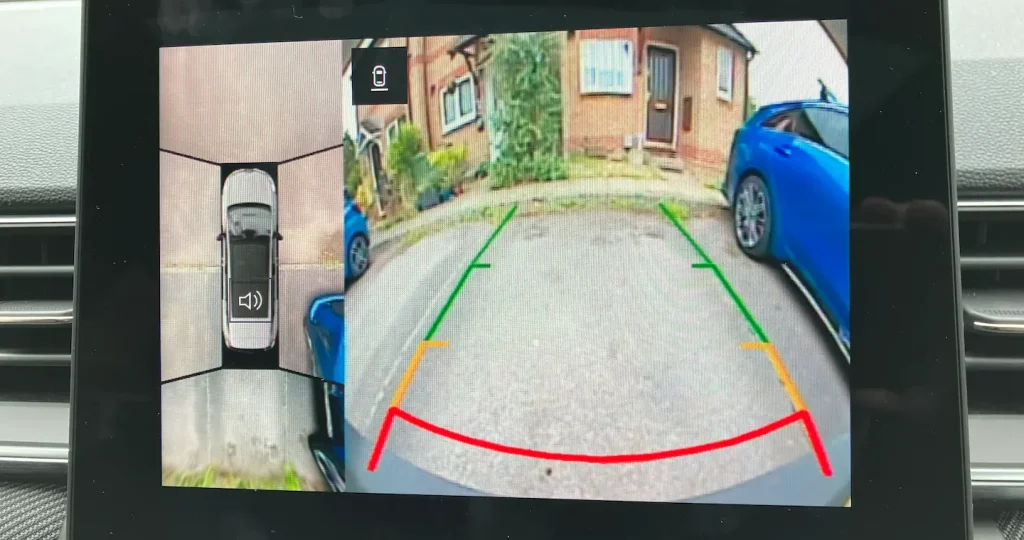
Something else that two separate passengers drew attention to was the front passenger seatbelt being a bit tricky to use. Obviously I’d never sat in the passenger seat before, and there was no clear reason for a problem, but again having tried it myself I have to say they are correct – something about it doesn’t quite fall to hand easily. My best theory as to why that might be the case is that the prong element of the plug is angled outwards slightly from the handle – but then this also applies to the driver’s seatbelt, with which I’ve never had any problems. Maybe it’s just somehow trickier right-handed?
I should note that it wasn’t all complaints. The Solarbay sunroof impressed – as a reminder, this features glass that can be electronically switched between transparent and opaque (or front half one, back half the other). Passengers generally considered this to be a neat and clever solution, while personally I appreciate the improved headroom compared with a traditional sunroof set-up.
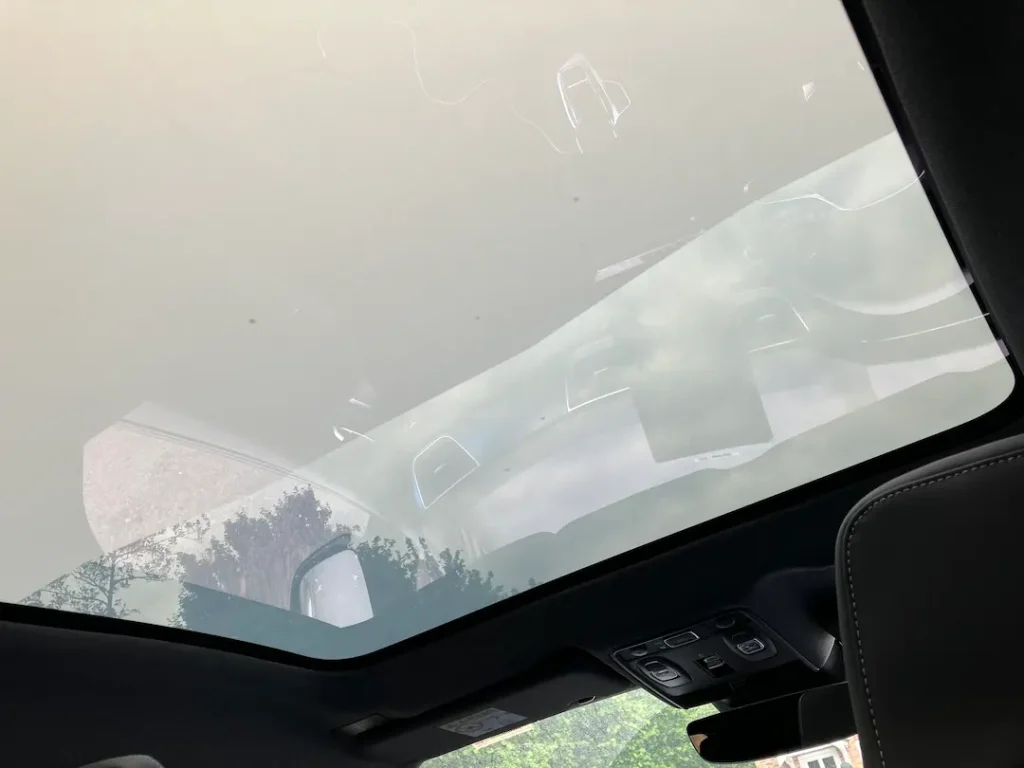
One final takeaway was one that to be honest I’d anticipated – that Renault’s SUV range might not be the easiest to understand, since one passenger asked if it was the Renault SUV beginning with ‘A’ that they’d heard about. I had to explain that although until recently Renault made two medium SUVs beginning with ‘A’ – the Austral and the (now discontinued) Arkana – this wasn’t either of them. To broadly summarise, Renault’s medium SUVs now break down as follows: Symbioz (entry-level SUV); Austral (posher SUV); Rafale (posher SUV-coupe; and Scenic (full EV). Of course, manufacturers have not exactly struggled to sell SUVs in recent years, and Renault can therefore argue that it is simply meeting customer demand. But I do wonder how your average buyer walking into a showroom – or company car driver looking at a choice list – is supposed to make sense of it all.
Incidentally, I did recently take a brief passenger ride in a Rafale, and it did seem a bit nicer inside than the Symbioz. However, I’d need to take a full test drive to decide if it’s worth the £7,000 price premium.
| Model | Renault Symbioz E-Tech Hybrid Iconic Esprit Alpine 145hp |
| P11D price | £33,055 |
| As tested | £33,705 |
| Official consumption | 60.1mpg |
| Our average consumption | 50.2mpg |
| Mileage | 4,136 |
4th Report: Chiming in
It’s a difficult noise to describe – sort of an electronic knocking sound, similar to an indicator click, kind of like an 80s computer game approximation of a ping pong ball bouncing into a cup. It’s a sound I’ve heard from time to time while driving the Symbioz, and one of the puzzles during my time with the car has been working out what exactly the noise is trying to tell me about? Since, unhelpfully, it isn’t accompanied by any warning message on the driver display.
I’ve considered several possibilities. Is it warning me about drifting out of lane? Is it telling me to keep both hands on the steering wheel, or keep my eyes on the road? Is it telling me that the adaptive cruise control system has locked onto the car in front, or the opposite?
Eventually, I noted that a small icon on the driver display appeared to be greying out when the sound occurred, and consulting the instruction manual revealed that this was linked to the Symbioz’s lane centring function. Renault’s website elaborates that this is part of the ‘active driver assist’ system, alongside the adaptive cruise control, and that it helps the driver stay in lane at speeds between 0 and 99mph when there is a vehicle in front to follow, and between 37mph and 99mph when no other vehicle is present. A sound when the icon greys out is presumably therefore warning the driver that the system has stopped working.
So, mystery solved? Well, yes in theory, but in practice when driving having read this information I found that the system seemed also to be operating at speeds outside these parameters, and that the icon was regularly illuminating and greying out again with no warning sound. Does this therefore mean that the warning only comes when some special extra condition is met? Who knows, but Renault’s website makes no mention of a warning noise, and frankly I’m now past caring. The takeaway from this, I would argue, is that driver assistance systems are only really of use when their functions are easily understood, and that Renault has therefore rather dropped the ball in this case.
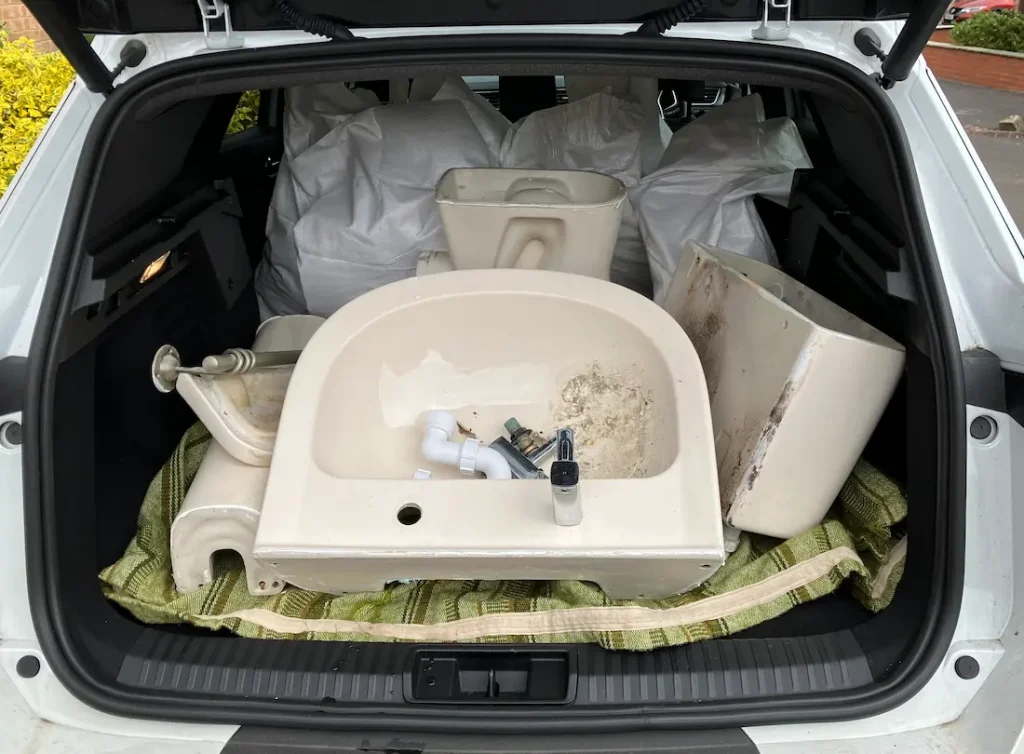
In more traditional long-term test news, some bathroom renovation work carried out at my house provided the opportunity for that staple of these reports – a trip to the recycling centre. This gave me a chance to assess the Symbioz’s load-carrying capabilities, but unfortunately, since the rear seats needed to be folded, the car’s most interesting practicality feature – a sliding rear seat – was rendered irrelevant.
In all other aspects, I found the Symbioz’s boot to be entirely unremarkable. There is no easy roll-up parcel shelf, there are no remote seat folding levers, the seats themselves don’t quite fold flat, and with the adjustable boot floor in its raised position the load lip is nearly flat, but not quite. Still, the space was big enough to take everything I needed it to. Officially with the seats folded there is 1,582 litres of space, which makes the Symbioz more commodious than the similarly-sized Nissan Qashqai and MG ZS.
| Model | Renault Symbioz E-Tech Hybrid Iconic Esprit Alpine 145hp |
| P11D price | £33,055 |
| As tested | £33,705 |
| Official consumption | 60.1mpg |
| Our average consumption | 50.2mpg |
| Mileage | 3,875 |
3rd Report: Hybrid theory
The powertrain of our long-term Renault Symbioz is described by the manufacturer as a full hybrid. This means that it can’t be plugged in, but offers more than a ‘mild hybrid’ in that it is capable of driving on electric power alone for periods of up to a mile or so (the Symbioz has a 1.2kWh battery), and will regularly switch between EV-only, petrol engine-only, and combined power during journeys. In short, it’s the functionality we all got used to as a plain old ’hybrid’ when the Toyota Prius first started making waves about two decades ago.
Other manufacturers have recently started using the term ‘self-charging hybrid’, a term which might work if you’re willing to ignore the laws of physics, while I personally tend to plump for ‘conventional hybrid’. It’s probably best to note, however, that Renault’s E-Tech hybrid system is not actually that ‘conventional’, and differs somewhat from the more familiar Toyota-style system, as seen in my previous Yaris long-term test car.
Alongside a 1.6-litre petrol engine, the Symbioz’s powertrain features two electric motors – a 36kW traction motor, and a mild hybrid-style 18kW high-voltage starter generator. Added to this is a gearbox which offers four gears for the petrol engine, and two gears for the electric motor, which according to Renault allows up to 14 combinations of drive, with the aim of optimising fuel efficiency.
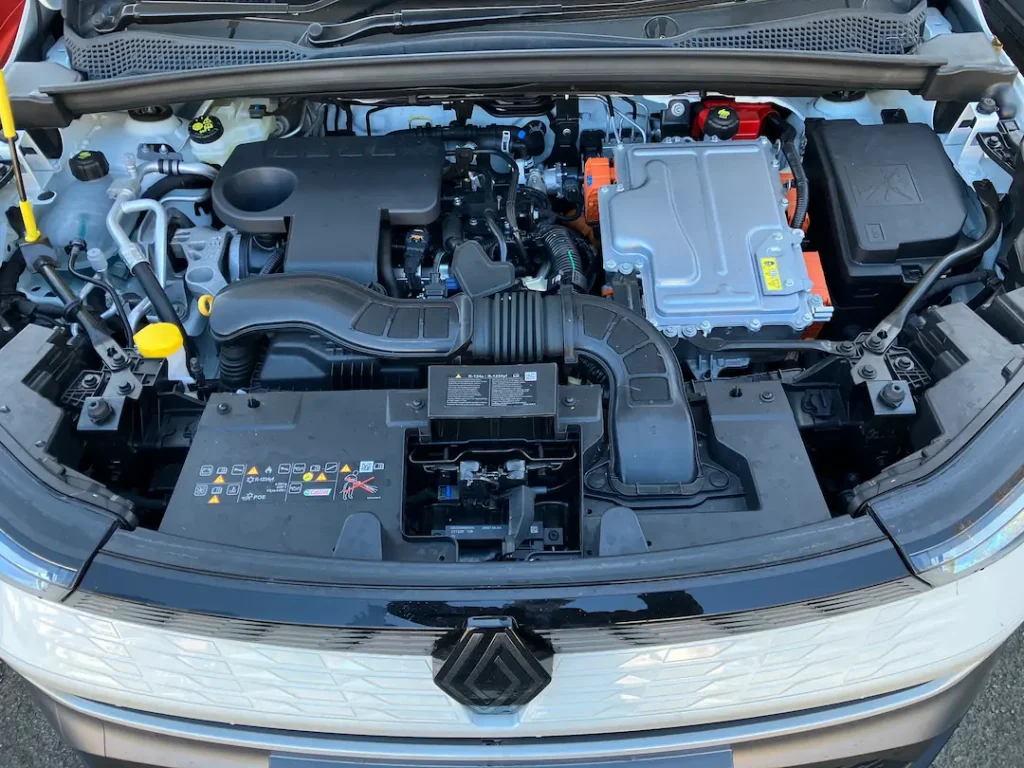
This system has been around on Renaults for a few years now, and I first came across it on the old Megane Sport Tourer family estate in 2021. However, that was in plug-in hybrid form, with a far bigger battery, and I was unimpressed by a slow throttle response, and droning engine note.
The full hybrid version I later tried with the Clio supermini was, however, much better, creating cause for optimism with the Symbioz. Although, with the Symbioz being a bigger and heavier car than the Clio, and also the Captur B-segment SUV with which the powertrain is also available, there could have been some concerns about it being underpowered.
As it has turned out, there’s been little cause for concern on that front, as acceleration on offer is more than adequate, and the Symbioz never feels lacking in puff. As for the powertrain’s operation, transitions between full EV mode and the petrol engine are handled smoothly.
When driving around town, if you concentrate, you can sometimes notice the petrol engine’s revs being held higher than you’d normally expect. But refinement at these speeds is good, and you’re unlikely to notice it if you have the stereo on. It’s fine accelerating up to motorway speeds too – again high revs sometimes persist for a
bit longer than you’d think, but it isn’t intrusive.
If there is a weakness, then it is between these two points – accelerating from about 30 to 50mph with a medium throttle. This can make things a bit loud and droney, to the point where I will tend to roll off the accelerator a little to encourage the powertrain to either change up a gear, or switch over to full EV mode.
Of course, the main argument for any sort of hybrid powertrain is normally to save fuel. On this front, we could say that for our Symbioz, the jury is still out.
A test average of 49.5mpg so far certainly is not at all bad for a family SUV. However, it is further from the official WLTP figure than I previously managed with the hybrid Yaris. Perhaps as we move away from the coldest of the winter temperatures – which have on many occasions resulted in periods of stationary engine running outside my house while the car defrosts – things will go on to improve.
| Model | Renault Symbioz E-Tech Hybrid Iconic Esprit Alpine 145hp |
| P11D price | £33,055 |
| As tested | £33,705 |
| Official consumption | 60.1mpg |
| Our average consumption | 49.5mpg |
| Mileage | 3,034 |
2nd Report: Mute point
EU regulations introduced last year (which for production reasons invariably also affect UK cars despite Brexit) mandated the installation of intelligent speed assistance technology on all new cars, requiring them to automatically warn their drivers if they are breaking the speed limit. These systems are allowed to be turned off by the driver – however, they must be re-engaged automatically every time the ignition is switched on.
In principle, it’s hard to object to these systems – although in practice cars’ speed limit information on which the warnings are based is rarely 100% reliable. However, what I do object to is that many cars tie this in with an audible warning whenever the speed limit changes.
Since I am able to read road signs, I find these tones very irritating, so it’s important for me to be able to switch them off as easily as possible. It was a bugbear with my previous Toyota Yaris long-termer that doing so required scrolling through a settings menu before each trip.
Although our long-term Symbioz also has limit change noises alongside speeding warnings, Renault is clearly well aware of the potential for these systems to annoy – so much so that its solution to the problem featured prominently in its press information when the Symbioz was launched. This involves a button on the dashboard, to the right of the steering wheel, which is dubbed the ‘My Safety Switch’. Simply press this twice on start-up, and the driver’s preferred settings for the ADAS systems – including the muting of speed limit warnings and limit change alerts, should these be selected – are automatically implemented. For those yet to experience this technology this may seem minor, but personally I count it as a major stress and time saver to be able to deactivate these noises so easily, rather than having to wade through settings menus before every single drive.
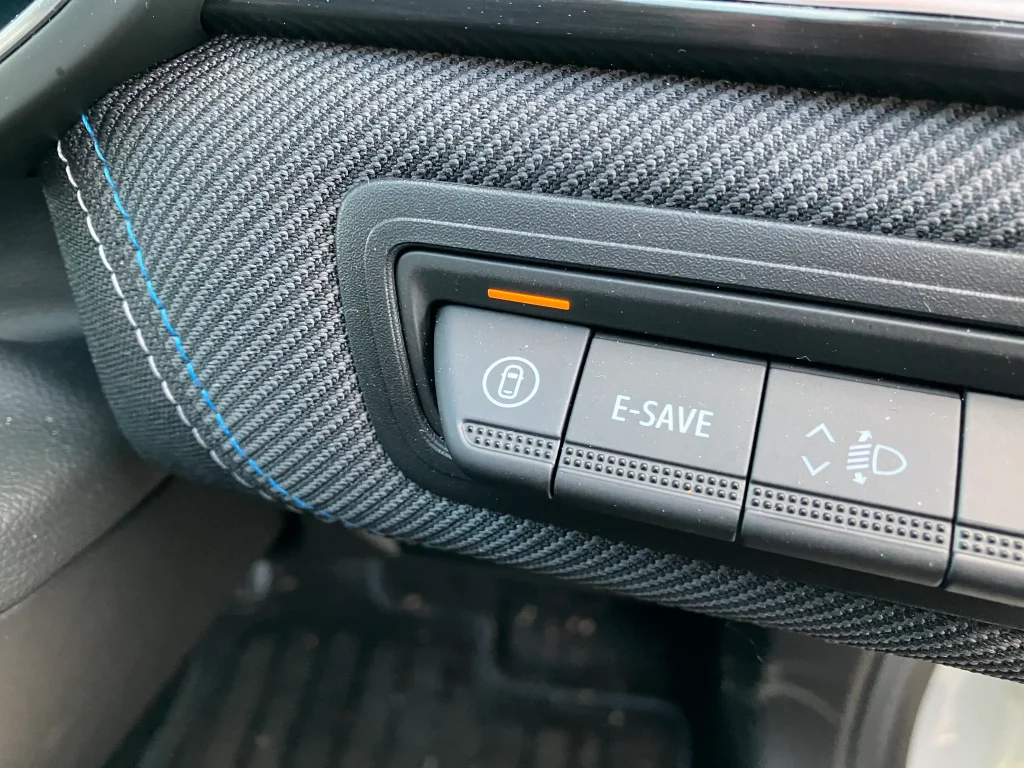
Unfortunately, I’m not so happy with another element of the Symbioz’s driver assistance systems – those concerning parking. This isn’t due to a lack of equipment – with the range-topping Iconic Esprit Alpine equipment grade specced with our test car, you get all-round parking sensors, as well as front and rear cameras and a 360-degree camera display. The problem is that the sensors often seem to have a mind of their own, and during low-speed manoeuvring will often erupt in beeps when there is nothing nearby. At best this is annoying – at worst there’s a risk of a ‘boy cries wolf’ situation developing, where I dismiss all noises from this system as false alarms and end up having a collision. The need to guard against this means I have to be extra vigilant when parking, which although arguably good practice, effectively renders the sensors redundant.
The cameras are better, with the reversing guide lines moving in line with the steering wheels – something I also complained about the Yaris lacking. However, the camera view does seem fairly prone to becoming obscured by dirt, and also the 360-degree view is fairly small on the infotainment screen – perhaps a result of this display being portrait rather than landscape orientated.
| Model | Renault Symbioz E-Tech Hybrid Iconic Esprit Alpine 145hp |
| P11D price | £33,055 |
| As tested | £33,705 |
| Official consumption | 60.1mpg |
| Our average consumption | 49.5mpg |
| Mileage | 2,727 |
1st Report: SUV star?
The debate about the pros and cons of SUVs has been raging since long before I started at Business Car in 2017, but there’s no doubting the vehicles’ continued popularity. The Society of Motor Manufacturers and Traders registration data for 2024 revealed that all of the top five UK sellers, and eight of the top ten, fitted this bracket.
It’s unsurprising therefore that we continue to get new SUV models arriving on the scene – even from a company such as Renault which seemed to have the market pretty well covered already. The Symbioz, which arrived last year, was the fourth medium SUV to join the manufacturer’s range, following on from the Austral, Arkana, and Scenic E-Tech. Renault bills the Symbioz as the entry-level option from those four, and now we’ve got one for six months I’ll be finding out if that makes it a prudent value choice, or just leaves a driver feeling short-changed.
That being said, our particular Symbioz is hardly bargain basement, since it’s in the range-topping Iconic Esprit Alpine equipment grade. The most attention-grabbing item on the standard equipment list is probably the ‘Solarbay’ panoramic sunroof, which features glass that can be switched between transparent and opaque, without the possibility of physically opening. Personally, I’m not normally a fan of sunroofs, since I’m not interested in my car becoming a greenhouse in summer, or in distracting glare from above year-round, but perhaps the Solarbay tech will succeed in addressing these issues while bringing the benefit of a little extra light to the cabin.
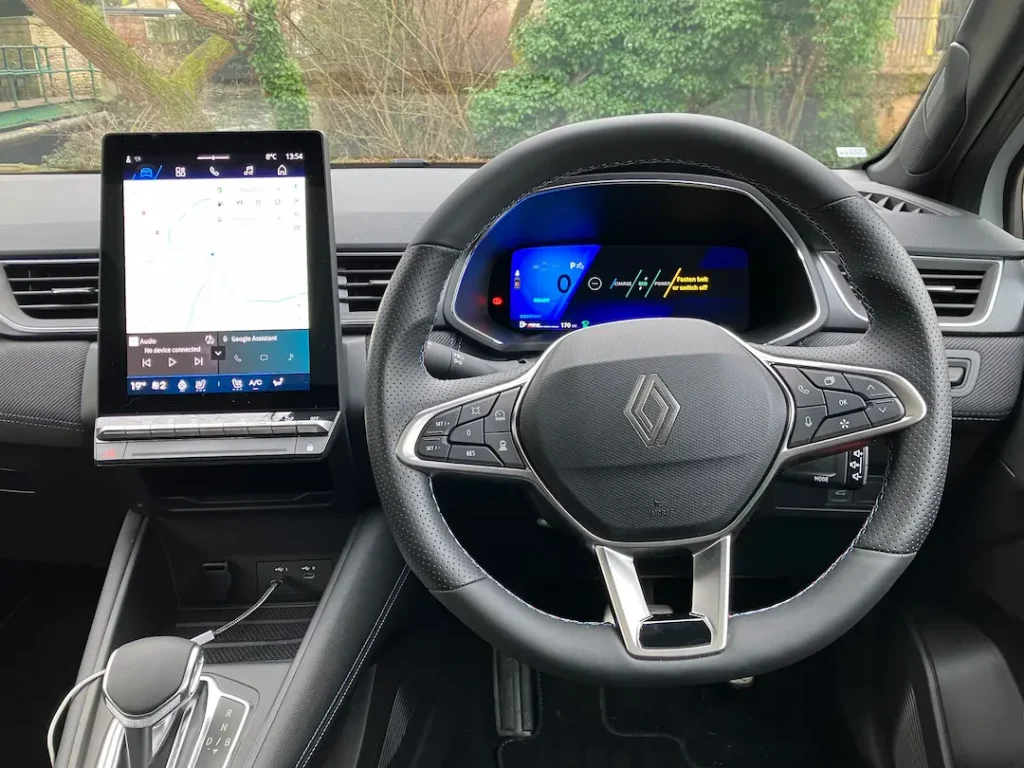
Other items of standard equipment include a 10.4in touchscreen with built-in Google Automotive services (though as an Apple iPhone user I probably won’t make the most of this), and a 10.25in driver display. Other noteworthy features include a 360-degree camera system, and heated seats and a heated steering wheel, which are particularly welcome having taken delivery of the Symbioz during winter.
With the ‘Esprit Alpine’ part of that spec name nodding to Renault Group’s performance brand, our Symbioz also features some sporty design elements. Initial impressions of these are a bit mixed – I like the dark 19in alloy wheels, but think the blue-trimmed seatbelts might be a step too far.
Our car has come with a single cost option – £650 Arctic White paint. It looked okay when it was delivered, but sadly my first drives with the Symbioz in inclement weather have proved the cliché about the difficulty of keeping white cars clean very true, as mud and grime from the roads has proved highly conspicuous once transferred to the bodywork. I’m therefore anticipating more time than usual spent car washing over the next few months if I’m to keep up appearances.
There’s only one powertrain option available with the Symbioz – a 145hp conventional hybrid. I’m optimistic about this, since as someone without home charging facilities, I found with my previous Toyota Yaris long-termer that a conventional hybrid powertrain offered far better fuel economy than I’d previously experienced with rarely-charged plug-in hybrid or ICE cars. Naturally, as a medium SUV rather than a small hatch, the Symbioz’s official WLTP economy figure isn’t as high as the Yaris’s – but at 60.1mpg, the Renault gets closer than I might have expected. I’ll be interested to see if I can get as close to matching this official figure as I did with the Toyota.
| Model | Renault Symbioz E-Tech Hybrid Iconic Esprit Alpine 145hp |
| P11D price | £33,055 |
| As tested | £33,705 |
| Official consumption | 60.1mpg |
| Our average consumption | TBC |
| Mileage | 2,155 |
Standard equipment: 19in alloy wheels, dark tinted rear windows and tailgate, aluminium sports pedals, frameless auto-dimming rear-view mirror with light and rain sensor, heated electric folding door mirrors, automatic air conditioning with one-touch quick demist function and air quality regulator, electric hands-free tailgate, hands-free keycard access and start, electrically adjustable heated front seats, heated steering wheel, ‘Solarbay’ panoramic sunroof, wireless smartphone integration with Apple Carplay and Android Auto, 10.4in touchscreen with built-in Google Automotive services including navigation, nine-speaker Harman Kardon audio system, 10.25in driver display, wireless phone charger, four USB-C ports, ambient lighting, traffic sign recognition with overspeed prevention, safe exit alert, blind spot warning and rear detection with emergency lane keep assist, active emergency braking system, adaptive cruise control with lane centering assist, rear cross traffic/pedestrian alert, all-round parking sensors, hands-free parking, 360-degree camera system.
Options: Arctic White special metallic paint (£650)


